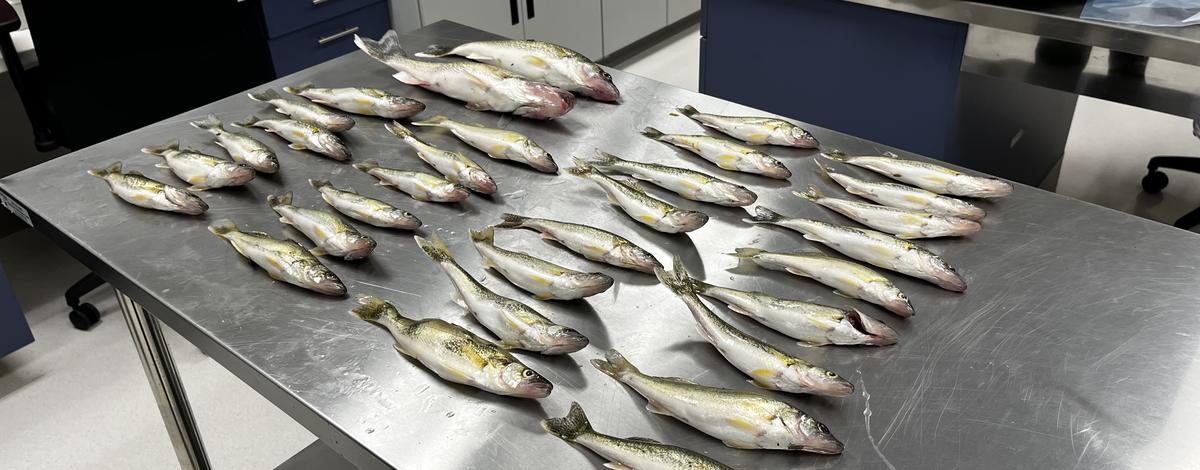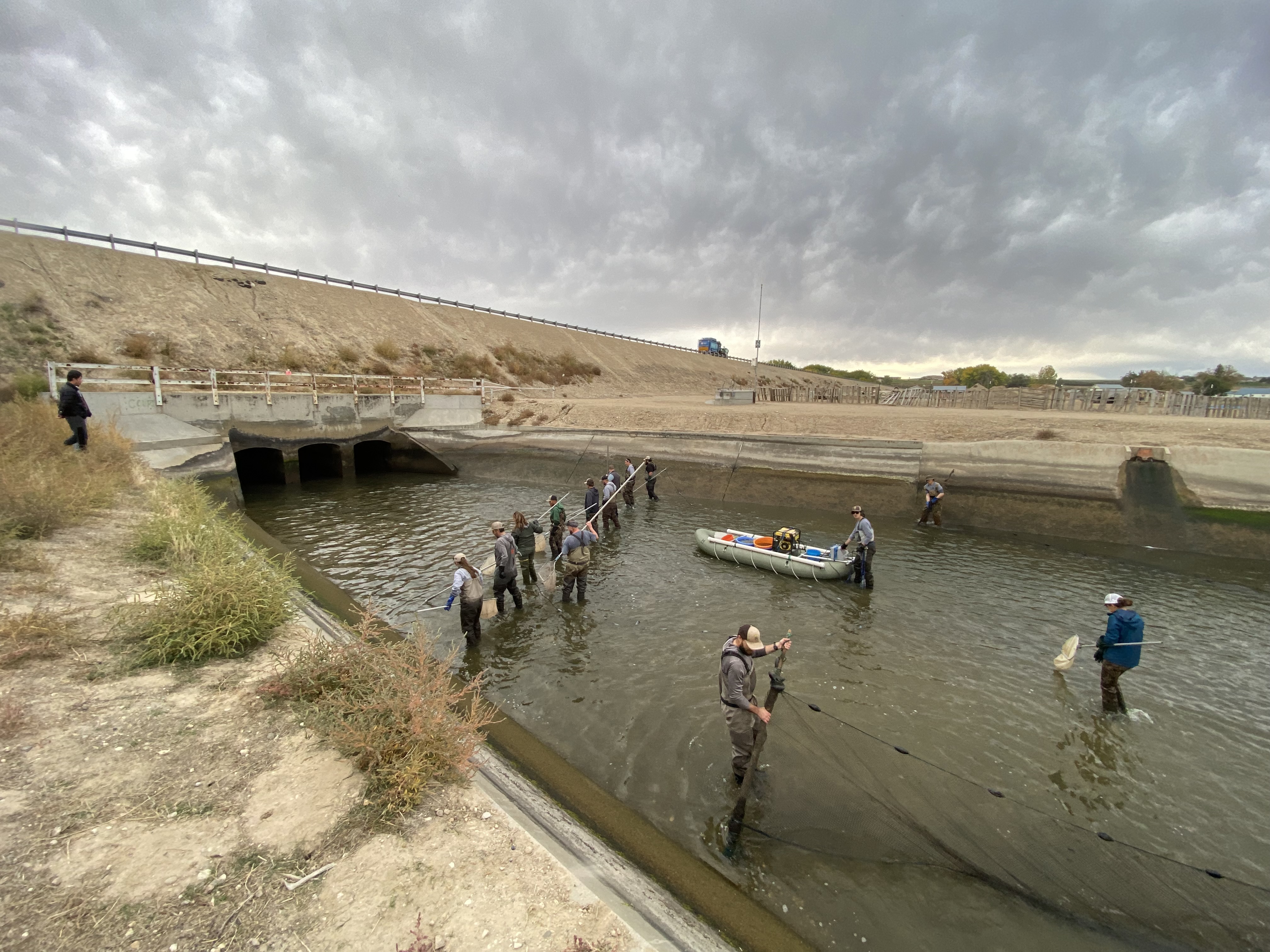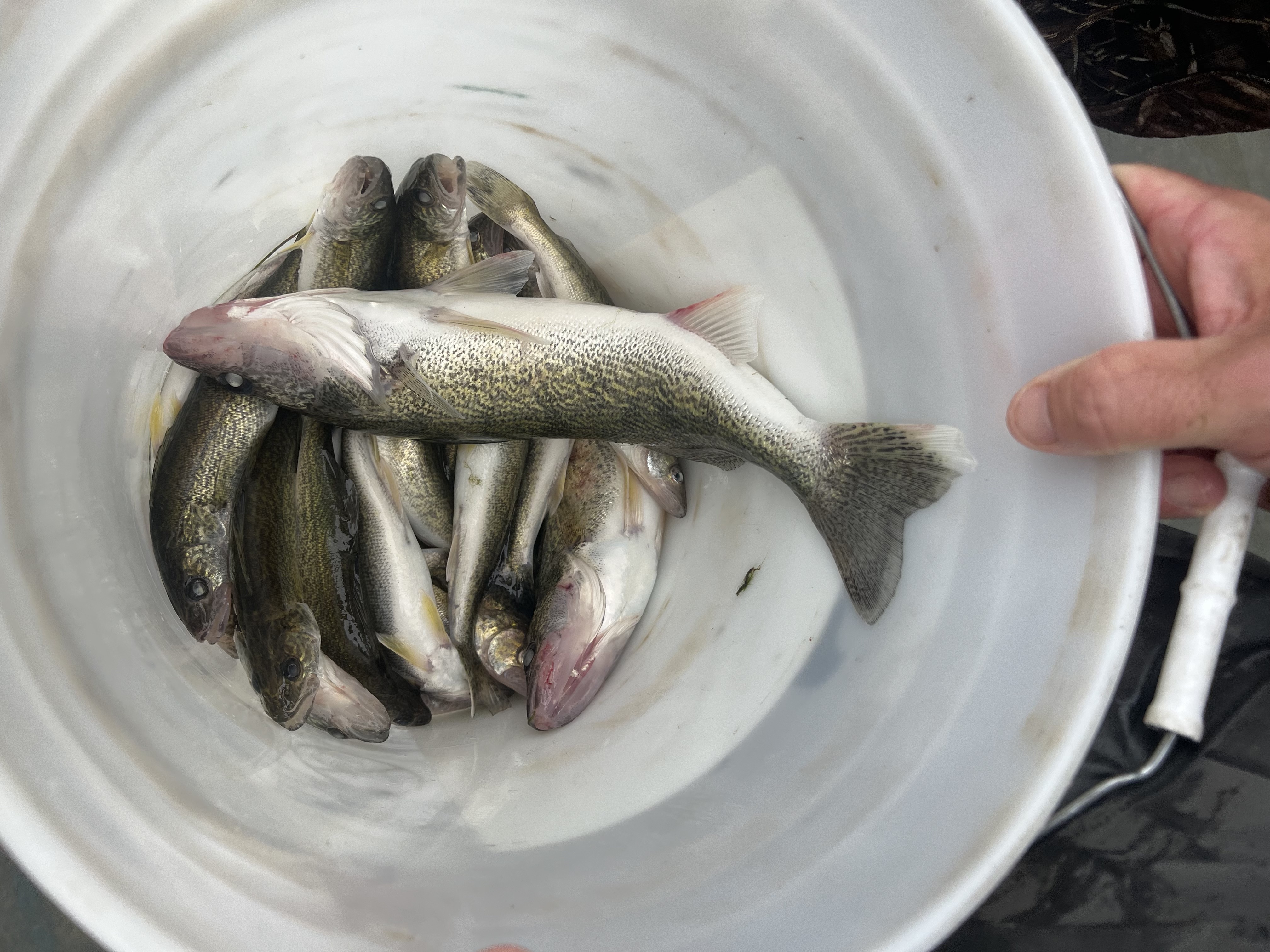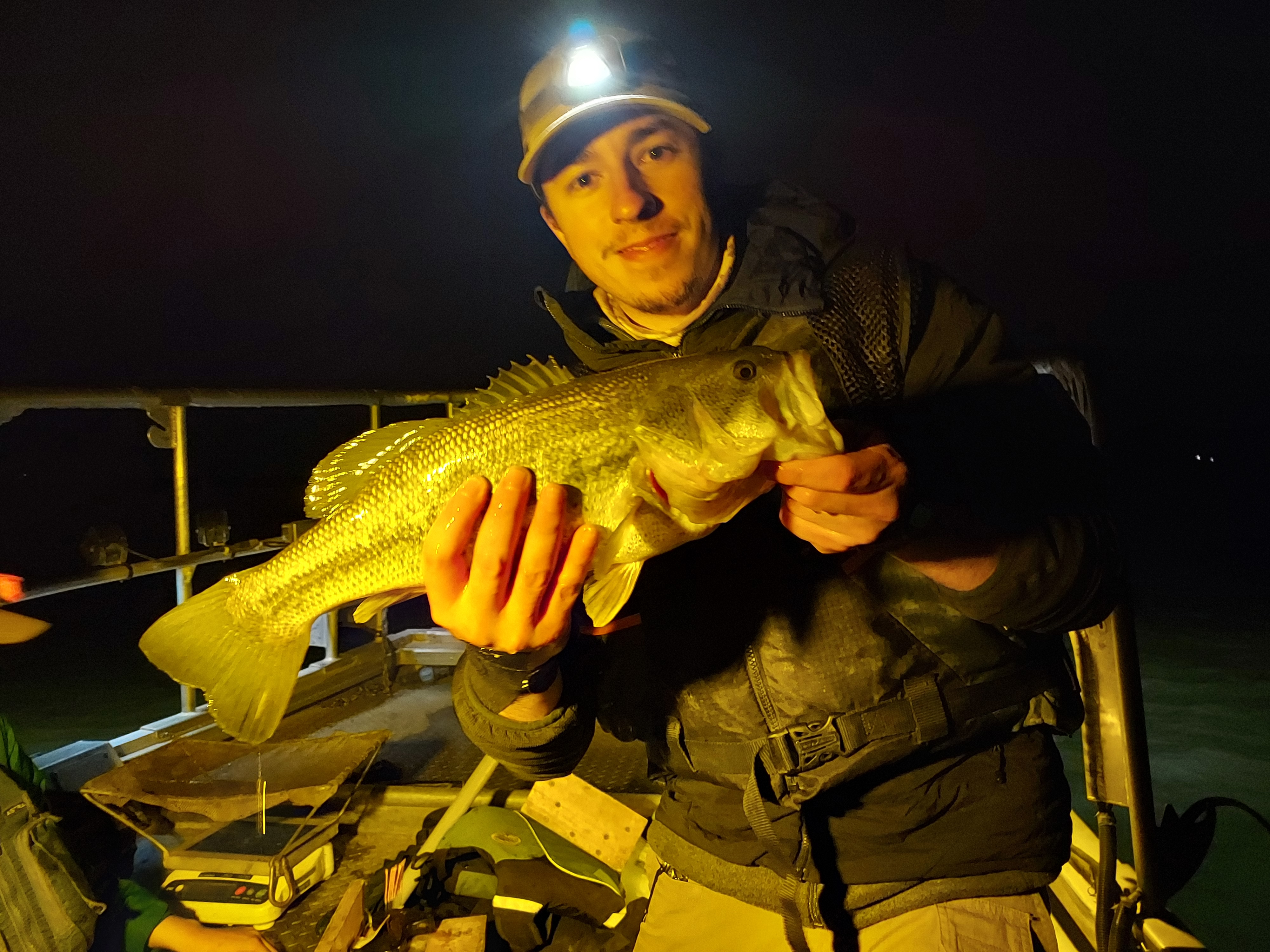Fish and Game biologists learned on Oct. 10 that Lake Lowell now likely has a reproducing population of walleye. While the effects to Lake Lowell and other area fisheries are uncertain at this point, they are concerned about what this might mean for this fishery and others in Southwest Idaho.
During a recent warmwater fish survey of the outlet of Lake Lowell, Fish and Game staff encountered and killed 31 walleye of two different size classes. Most of the walleye were on the small side – around 7 inches in length – leading biologists to believe that they are successfully reproducing in the lake.




